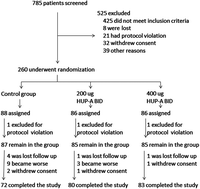The effects of black soybean (Glycine max var.) on chronic cervical pain of sedentary office workers in a northern Chinese population
Abstract
Chronic cervical pain is a common symptom of sedentary office workers. Black soybean (Glycine max var.) has rich necessary nutrients for the therapy of chronic pain. Thus, it may ease chronic cervical pain. To prove our claim, 260 sedentary office workers with chronic pain were recruited and they consumed the defined diets at breakfast, lunch, and dinner with 1 g, 5 g and 10 g (3 g, 15 g, 30 g daily) cooked black soybean for 24 weeks. Visual analog scale (VAS), neck disability index (NDI) pain scores and short-form 36 (SF-36) health survey questionnaires were applied in the study. The levels of N-methyl-D-aspartate receptors (NMDAR) were measured. The VAS and NDI pain scores reduced and SF-36 scores increased in a 15 or 30 g black soybean daily group compared with a 3 g black soybean daily group after a 24-week therapy (P < 0.05). The 30 g black soybean daily group was better than the 15 g black soybean daily group in relieving chronic cervical pain of sedentary office workers (p < 0.05). The levels of NMDAR were lower in the 15 or 30 black soybean daily group than those in the 3 g black soybean daily group (P < 0.05). Black soybean can ameliorate chronic cervical pain by down-regulating the levels of NMDAR.


 Please wait while we load your content...
Please wait while we load your content...